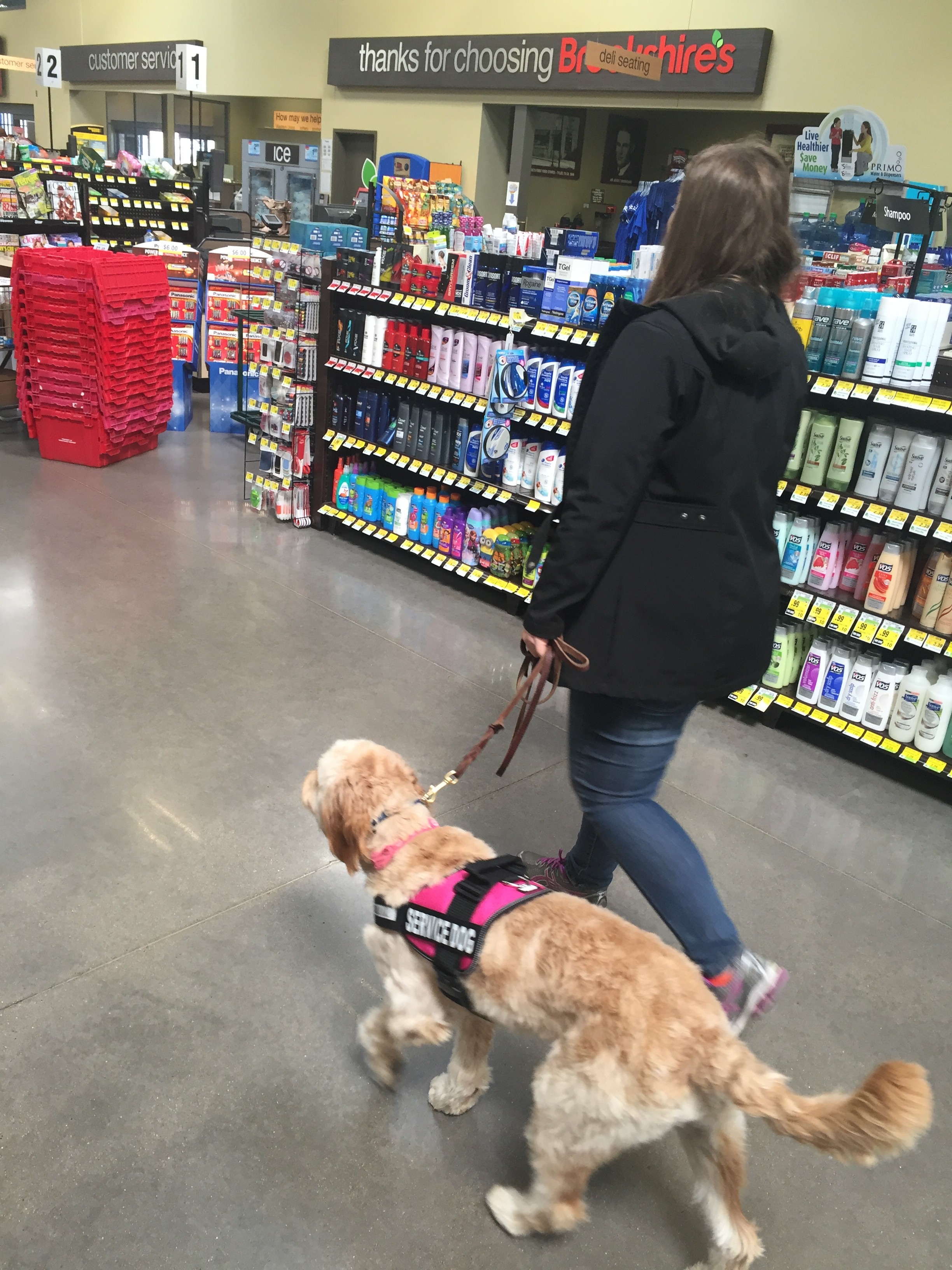Many of you know that aside from obedience and behavioral training we also train service dogs here at Top Dog. We feel it’s our responsibility to help educate the public a bit more on service dogs, what they are and are not, and how they should be respected when you come across one. We’ve decided one of the ways we will accomplish this is by including some service dog etiquette pointers once or twice per year in our monthly newsletter, as well as here on our blog.
Here’s some FAQ that we would like to help everyone understand.
1) A common question we get asked by many of our clients, and countless people out in public is, “Why can’t I pet a service dog?” Some folks make the assumption that the dog must not be friendly, or maybe it’s shy, and the opposite is usually true. Most of these dogs would love to get some affection from a stranger and take a break from their job, but you have to think about the big picture. If the dog starts getting free affection from strangers, they are not going to be as focused on their handler, nor will they be as motivated to work for their handler. It’s kind of the equivalent to if I started sending you paychecks on a regular basis, you probably would quit going to work right? Well, service dogs don’t accept paychecks but they do accept affection as a reward for their work, and if you’re giving it to them for free, they won’t be as excited to get it from their handler.
Another prime reason not to mess with a service dog in public is because you never know when the handler is going to need the dog. You literally have to think of the dog as a medical device because that is exactly what it is. I’ve never gone up and asked someone if I could play with their wheelchair in public, or borrow their cane to help me reach something. What if they need it at the precise moment that I’m using it? They’re going to be in a world of trouble without that medical device right? Well, if you’re distracting someone’s diabetic alert dog for example, and the handler’s blood sugar begins to drop they could very easily end up in a dangerous situation very quickly. So please, don’t even ask to pet someones dog because they may say yes just to be polite, but in reality you may be putting them in a dangerous situation.
2) “I saw someone the other day who looked perfectly normal but they were walking with a service dog. They probably had a fake service dog right?” Absolutely not! (Although the problem with people having “fake” service dogs is quickly approaching epidemic proportions by my standards.) Many people have disabilities that you cannot see. Psychiatric disorders, epilepsy, diabetes, and even some mobility disorders do not always manifest themselves in a way that you would be able to see when someone walks past you. It does not make these dogs any less critical to the well being of this persons health, nor does it diminish their need for a service dog.
3) “I think service dogs are so amazing! How can I get one?” It would take an entire book to talk about the many tasks, and disabilities that service dogs are able to help mitigate. However, that does not mean that just anyone can or should get a service dog. These dogs are not an elaborate accessory. If you do not suffer from a disability that impedes on your daily ability to have a high quality of life, then you probably do not need a service dog. One of my favorite blogs that someone has written about this subject can be found here: http://blackdogsrule.com/diabetic-alert-dogs-are-not-a-panacea/
4) “Is it okay to take a picture of a service dog?” No. As much as every service dog owner loves their dog, many wish they could leave their dog at home just like you do. The constant attention that a service dog brings is a nuisance, and the reality is that if these people had the option to use a less eye catching medical device most of them would choose to do so. My favorite color is red, but I don’t stop every person in a red wheelchair and ask if I can take a picture of it. Most people with a disability do not enjoy having attention drawn to their disability or their medical devices.
Service dogs truly do perform amazing tasks for their disabled owners each and every single day. I am constantly in awe at the level of training that we can achieve with many of these dogs, and I hope that by reading this you too will admire their work, but do so at a distance. Thanks for reading. Look for part two this summer.


Pharmacyrx Kamagra Oral Jelly Kaufen Gunstig